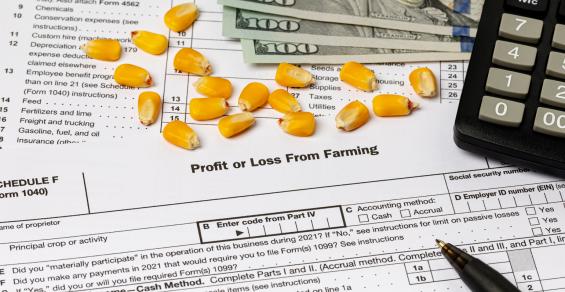K-State ag economist Brian Briggeman discusses how interest rates may affect the farm economy.
For the first time in a very long time, inflation is at the top of the American consumer’s mind. The headlines are full of news about rising inflation rates, and the possibility of a recession.
Brian Briggeman, Kansas State University professor of agricultural economics and director of the Arthur Capper Cooperative Center, says farmers and ranchers need to prepare for how that may affect them.
Current status
Inflation is going up, but it’s definitely not where we saw it in the 1970s, Briggeman says. Many things led to inflation north of 6%, from supply chain issues after the pandemic, to consumer demand spiking post-pandemic, he says.
“We have a lot of pent-up demand,” Briggeman says. American families want to get out and travel, and they’ve seen real wage growth; both are stimulating the demand side of the inflation picture. Additionally, there have been low interest rates for a number of years. The Federal Reserve is responding by raising interest rates in response to try to cool inflation and boost the economy, he says.
That’s on the consumer side. But what does it mean for farmers and ranchers?
On the farm
Briggeman says farmers he talks to want to know if we’re too late in preparing. So many of those farming today remember what happened in the 1970s with out-of-control inflation and interest rates in the double digits, he says, which caused the 1980s farm crisis.
“So, the fear is inflation is just starting now, and interest rates will continue to go up,” Briggeman says. But farmers have three options to handle this situation and position themselves to survive.
1. Build up your balance sheet. “Build up your working capital and boost your liquidity position,” Briggeman says. Yes, it’s expensive to put a crop in the ground and raise livestock, but only have debt that makes sense to the long-term survivability of the farm.
2. Control your costs. Be as efficient as possible on the farm and ranch, he says. “Be as cost-efficient as you can, so that when the market gives you an opportunity to sell your grain and lock in a profit, you can take it and build that balance sheet up to get you through the period of time,” Briggeman says.
3. Be conservative. “Don’t get too aggressive, and don’t put the farm out there,” he says. There’s a time and a place for taking business risks, but now may not be it.
The Kansas Farm Management Association reports that the average net farm income for its members in 2021 was $310,000, with the 10-year average at $124,000. Even with elevated crop input prices and feed costs, the forecast for Kansas net farm income is an average of $291,000, he says. Now would be the time to set aside for a downturn.
Farmland values
It’s been known for several years now that there’s a large number of farmers approaching or at retirement age, and that means the potential for a great turnover in land ownership. But with inflation, high interest rates and the potential for a recession, is now the time to sell land, or hold onto it?
“If history is our guide, over time, with interest rates rising, it tends to put downward pressure on land values,” Briggeman says. Capitalization rates can push down land values.
This isn’t like the situation that occurred in the 1980s, with double-digit interest rates and significant land debt that caused farmers to miss payments and lead to foreclosures and a collapse in land values, Briggeman emphasizes. Rather, those higher interest rates may make it more difficult for younger or middle-aged producers to purchase land and grow their operations.
“It could have a dampening effect on land prices, because the financing of farmland will be more expensive,” he cautions. However, we have high commodity prices and positive net farm income this year that can help the situation.
“The one thing I know about Kansas farmers and ranchers is that they are resilient — and they have been through difficult times and have come out on the other side better and stronger,” Briggeman says. We’ll find a way through this, he adds.



